
Valley of Flowers: India's Blossoming Paradise
Explore the Valley of Flowers National Park, a vibrant Himalayan haven in India bursting with exotic flora, wildlife, and breathtaking treks from July to September.
Hidden high up in the Himalayas, the Valley of Flowers National Park is a stunning natural wonder that comes alive each summer with a burst of colors. This UNESCO World Heritage site is renowned for its vibrant meadows filled with endemic flora, offering a visual feast for nature lovers and botanists alike. The park covers a vast area of lush greenery, framed by snow-capped peaks, and is home to a diverse range of wildlife including the elusive snow leopard and Asiatic black bear. The best time to visit the Valley of Flowers is from July to September, when the monsoon rains awaken a kaleidoscope of flowers, creating a mesmerizing landscape. The journey to the valley itself is an adventure, beginning at the town of Govindghat and involving a trek through picturesque villages and over majestic bridges spanning sparkling rivers. This trek is moderate in difficulty but promises rewarding views at every turn. Beyond the flora, the Valley of Flowers is steeped in local legends and spiritual significance. Many believe the valley was created by the gods, and it remains a place of pilgrimage for many. The nearby Hemkund Sahib, a Sikh place of worship, adds to the spiritual vibe of the region. Whether you're a trekker, a botanist, or simply a nature enthusiast, the Valley of Flowers offers an unforgettable experience that will leave you in awe of nature's beauty.
Local tips in Valley of Flowers National Park
- The best time to visit is from July to September to see the flowers in full bloom.
- Start your trek early in the morning to avoid afternoon showers and maximize daylight.
- Wear sturdy trekking shoes and carry rain gear, as the weather can be unpredictable.
- Acclimatize in Govindghat or Ghangaria to prevent altitude sickness.
- Hire a local guide to enrich your experience with regional knowledge and ensure safety.
Valley of Flowers: India's Blossoming Paradise
Hidden high up in the Himalayas, the Valley of Flowers National Park is a stunning natural wonder that comes alive each summer with a burst of colors. This UNESCO World Heritage site is renowned for its vibrant meadows filled with endemic flora, offering a visual feast for nature lovers and botanists alike. The park covers a vast area of lush greenery, framed by snow-capped peaks, and is home to a diverse range of wildlife including the elusive snow leopard and Asiatic black bear. The best time to visit the Valley of Flowers is from July to September, when the monsoon rains awaken a kaleidoscope of flowers, creating a mesmerizing landscape. The journey to the valley itself is an adventure, beginning at the town of Govindghat and involving a trek through picturesque villages and over majestic bridges spanning sparkling rivers. This trek is moderate in difficulty but promises rewarding views at every turn. Beyond the flora, the Valley of Flowers is steeped in local legends and spiritual significance. Many believe the valley was created by the gods, and it remains a place of pilgrimage for many. The nearby Hemkund Sahib, a Sikh place of worship, adds to the spiritual vibe of the region. Whether you're a trekker, a botanist, or simply a nature enthusiast, the Valley of Flowers offers an unforgettable experience that will leave you in awe of nature's beauty.
When is the best time to go to Valley of Flowers National Park?
Iconic landmarks you can’t miss
Valley of Flowers, The Paradise on Earth
Discover the breathtaking beauty of the Valley of Flowers, a UNESCO World Heritage Site, adorned with vibrant flora and stunning mountain views.
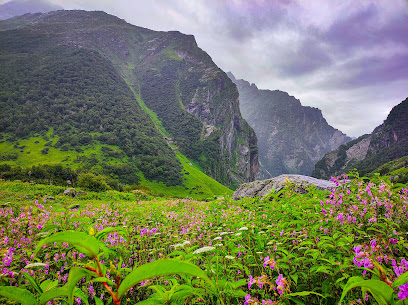
Flowers Valley
Discover the enchanting beauty of Flowers Valley, a vibrant tourist attraction in Uttarakhand, India, renowned for its stunning floral diversity and breathtaking landscapes.
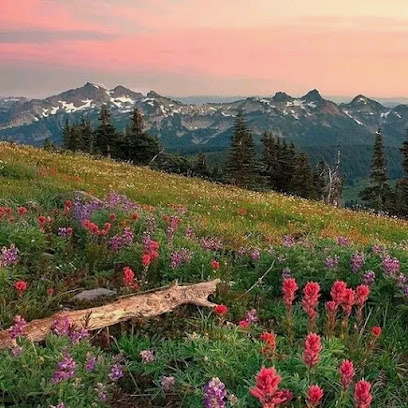
Unmissable attractions to see
Shree Badrinath Temple
Explore the spiritual heart of the Himalayas at Shree Badrinath Temple, a revered pilgrimage destination surrounded by breathtaking natural beauty.

Tungnath Mandir
Discover the serenity and beauty of Tungnath Mandir, a sacred Hindu temple nestled in the majestic Himalayas, perfect for spiritual seekers and adventure lovers alike.
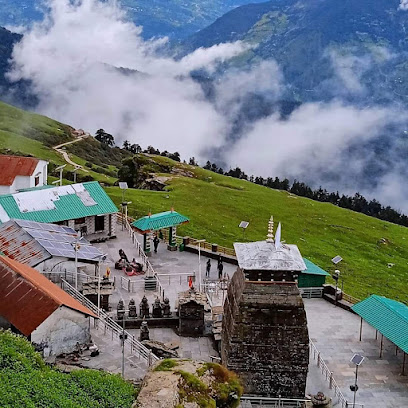
Nanda Devi National Park
Explore the breathtaking landscapes and rich biodiversity of Nanda Devi National Park, a UNESCO World Heritage Site in the heart of the Indian Himalayas.

Shri Narsingh Temple, Joshimath
Discover the tranquility and spiritual richness of Shri Narsingh Temple in Joshimath, a sacred site nestled in the heart of the Himalayas.

Bheem Pul, Mana
Discover Bheem Pul in Mana, Uttarakhand—a sacred bridge steeped in legends, surrounded by Himalayan beauty and spiritual serenity.

Auli Skiing School
Experience the thrill of skiing at Auli Skiing School, where breathtaking landscapes meet exhilarating winter sports in the heart of Uttarakhand.
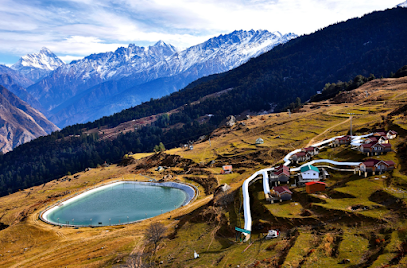
Gorson Bugyal
Explore Gorson Bugyal: An Alpine Meadow Offering Stunning Views, Thrilling Treks, and a Slice of Himalayan Paradise.

Shri Kalpeshwar Mandir
Experience tranquility and spirituality at Shri Kalpeshwar Mandir in Uttarakhand, a revered Hindu temple set amidst breathtaking Himalayan landscapes.

The Cave of Veda Vyasa
Explore the Cave of Veda Vyasa, a sacred site in Uttarakhand that combines spiritual significance with stunning natural beauty, perfect for every traveler seeking enlightenment.
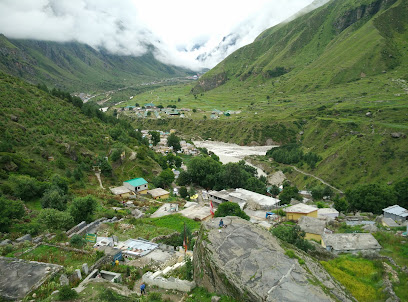
Shri Madmaheshwar Temple
Experience the spiritual serenity of Shri Madmaheshwar Temple, a sacred Hindu site nestled in the stunning landscapes of Uttarakhand.

Vishnuprayag, Uttarakhand, India
Discover the spiritual and natural beauty of Vishnuprayag, a sacred confluence in Uttarakhand, India, perfect for pilgrims and adventurers alike.

Govind Ghat
Experience the breathtaking beauty and spiritual richness of Govind Ghat, the gateway to the Valley of Flowers in Uttarakhand.

Vasudhara Falls
Discover the breathtaking beauty of Vasudhara Falls in Uttarakhand, where nature's grandeur meets serene tranquility.

Deoria Tal Trek
Experience the breathtaking beauty of Deoria Tal Trek, where lush forests meet serene lakes and majestic Himalayan views await.

Joshimath
Discover Joshimath, the serene hill station that serves as a gateway to the Himalayas and a hub for adventure and spirituality.

Essential places to dine
Valley of Flowers, The Paradise on Earth
Explore the breathtaking beauty of Valley of Flowers National Park in Uttarakhand - a UNESCO World Heritage Site filled with vibrant flora and stunning landscapes.
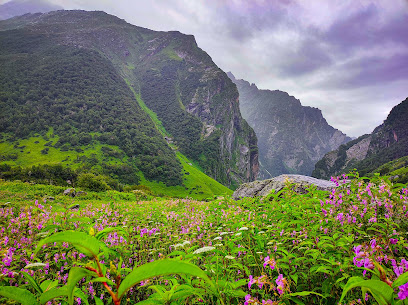
Camp valley of flowers Ghanghria
Experience Nature's Bounty at Camp Valley of Flowers Ghanghria - A Tranquil Camping Retreat Amidst Stunning Alpine Scenery.

Auli winter camp (Valleyofflower.in)
Discover Auli Winter Camp: Your gateway to thrilling winter sports and serene mountain escapes amidst stunning Himalayan landscapes.
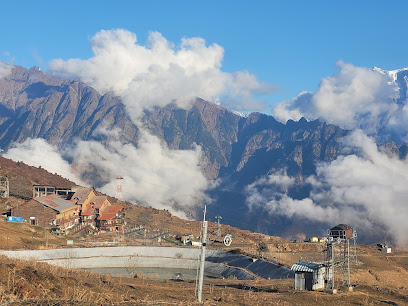
Markets, malls and hidden boutiques
Valley of Flowers National Park
Discover the breathtaking beauty of the Valley of Flowers National Park, a UNESCO site where vibrant blooms and stunning landscapes await nature lovers.

Chandan Coffee Centre Maana
Discover the charm of Chandan Coffee Centre Maana, where exquisite coffee meets breathtaking Himalayan views in a cozy atmosphere.

Valley of Flowers
Discover the breathtaking beauty of the Valley of Flowers in Uttarakhand, where vibrant blooms and majestic landscapes create a paradise for nature lovers.

Valley of Flowers, 2 Km
Explore the enchanting Valley of Flowers, a UNESCO World Heritage site in Uttarakhand, known for its stunning alpine meadows and diverse flora.

Valley of Flowers, The Paradise on Earth
Discover the enchanting Valley of Flowers, a UNESCO World Heritage Site adorned with vibrant blooms and stunning landscapes in the heart of Uttarakhand.

Amit kaparwan
Discover Amit Kaparwan, your go-to general store in Joshimath, offering a delightful range of local products and essential supplies for travelers.

Ashok kumar liquor shop
Discover the finest selection of wines and local spirits at Ashok Kumar Liquor Shop in the heart of Chamoli Gopeshwar, Uttarakhand.
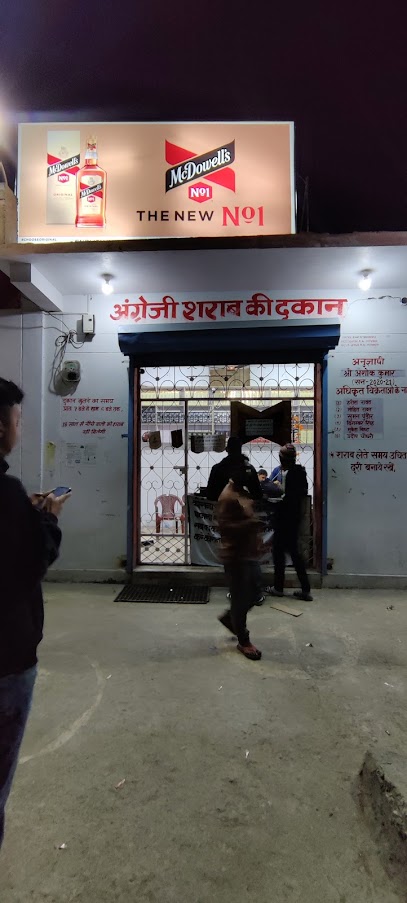
chauhan gift and toys center
Discover unique gifts and toys at Chauhan Gift and Toys Center in Gopeshwar, Uttarakhand, capturing the essence of your travels.

Shri badrinath fashion store readymade shop
Explore Shri Badrinath Fashion Store in Joshimath for a unique blend of traditional and modern clothing that captures the essence of Uttarakhand.

MAIKHURI WOOL STORE
Explore authentic woolen garments and local craftsmanship at Maikhuri Wool Store in Gopeshwar, Uttarakhand, a treasure trove of unique textiles.

Mansuri Cotton Works
Discover the essence of Uttarakhand at Mansuri Cotton Works, where traditional craftsmanship meets modern fashion in a charming setting.

Camp valley of flowers Ghanghria
Discover the breathtaking beauty of Camp Valley of Flowers Ghanghria, a serene campground in Uttarakhand, perfect for nature lovers and adventure seekers.

Valley of flowers checkpoint
Explore the breathtaking Valley of Flowers through its checkpoint, your gateway to a spectacular floral wonderland in the heart of Uttarakhand.

Negi General Store
Discover local flavors and essentials at Negi General Store, a charming hub in Gopeshwar, Uttarakhand, perfect for travelers seeking authentic experiences.

Himalaya Coffee Centre
Experience the tranquil charm of Himalaya Coffee Centre, where aromatic brews meet breathtaking Himalayan views.

Essential bars & hidden hideouts
Swagat Bar And Restaurant
Discover the flavors of Uttarakhand at Swagat Bar and Restaurant, a perfect blend of local cuisine and vibrant atmosphere.

Alpenrose Restaurant
Experience exquisite dining at Alpenrose Restaurant, where breathtaking views meet culinary delights in the heart of Joshimath, Uttarakhand.

KUBER ANNEX
Explore Kuber Annex in Ghangaria for a delightful dining experience infused with local flavors and hospitality amidst breathtaking natural beauty.

Valley of Flowers, 2 Km
Explore the Valley of Flowers – a UNESCO World Heritage site that captivates with its vibrant flora and breathtaking Himalayan landscapes, perfect for hiking and nature lovers.

The Bourbon Club N Lounge
Experience the vibrant nightlife of Joshimath at The Bourbon Club N Lounge, where exquisite drinks and stunning views come together.

Valley of Flowers, The Paradise on Earth
Explore the Valley of Flowers, a UNESCO World Heritage Site, where vibrant meadows and breathtaking Himalayan landscapes await every nature lover.

CAFE BRO
Explore the flavors of Uttarakhand at Cafe Bro, a family-friendly restaurant offering a delightful menu and a cozy atmosphere for all ages.

Rich taste
Discover Rich Taste in Jawar, Uttarakhand – a vibrant bar offering an exceptional drink selection and a welcoming atmosphere for all visitors.

Mishra Restaurant
Experience authentic Indian cuisine at Mishra Restaurant, an essential stop for travelers in the sacred town of Badrinath.

Hotel Preetam
Experience the perfect blend of comfort and local cuisine at Hotel Preetam in Ghangaria, Uttarakhand.

English wine shop
Discover the delightful English Wine Shop in Maithan, offering a curated selection of wines and a charming atmosphere perfect for all wine lovers.

Bolly vista family restaurant
Discover the taste of Uttarakhand at Bolly Vista Family Restaurant, where delicious food meets family-friendly hospitality.

Hotel Shyam Palace
Discover the charm of Hotel Shyam Palace in Ghangaria, your gateway to the majestic Himalayas and vibrant local cuisine.

Hotal New Gokul
Experience the authentic flavors of Uttarakhand at Hotal New Gokul, a charming restaurant in Pail Chak Bhyudar, perfect for culinary exploration.

Braham Kamal Restaurant
Discover the flavors of Uttarakhand at Braham Kamal Restaurant, a family-friendly dining gem in the heart of Badrinath.

Local Phrases about Valley of Flowers National Park
-
- Helloनमस्ते
[Namaste] - Goodbyeअलविदा
[Alvida] - Yesहां
[Haan] - Noनहीं
[Nahi] - Please/You're welcomeकृपया
[Kripya] - Thank youधन्यवाद
[Dhanyavaad] - Excuse me/Sorryक्षमा करें
[Kshama karein] - How are you?आप कैसे हैं?
[Aap kaise hain?] - Fine. And you?ठीक हूँ। और आप?
[Theek hoon. Aur aap?] - Do you speak English?क्या आप अंग्रेज़ी बोलते हैं?
[Kya aap angrezi bolte hain?] - I don't understandमुझे समझ नहीं आया
[Mujhe samajh nahi aaya]
- Helloनमस्ते
-
- I'd like to see the menu, pleaseकृपया मेन्यू दिखाइए
[Kripya menu dikhaiye] - I don't eat meatमैं मांस नहीं खाता/खाती
[Main maans nahi khaata/khaati] - Cheers!चियर्स!
[Cheers!] - I would like to pay, pleaseकृपया मैं भुगतान करना चाहूँ
[Kripya main bhugtan karna chaahoon]
- I'd like to see the menu, pleaseकृपया मेन्यू दिखाइए
-
- Help!बचाओ!
[Bachao!] - Go away!चले जाओ!
[Chale jao!] - Call the Police!पुलिस को बुलाओ!
[Police ko bulao!] - Call a doctor!डॉक्टर को बुलाओ!
[Doctor ko bulao!] - I'm lostमैं खो गया/गई हूँ
[Main kho gaya/gayi hoon] - I'm illमुझे बीमारी है
[Mujhe bimari hai]
- Help!बचाओ!
-
- I'd like to buy...मैं ... खरीदना चाहूँ
[Main ... khareedna chaahoon] - I'm just lookingमैं सिर्फ देखने आया/आई हूँ
[Main sirf dekhne aaya/aayi hoon] - How much is it?यह कितने का है?
[Yeh kitne ka hai?] - That's too expensiveयह बहुत महंगा है
[Yeh bahut mehnga hai] - Can you lower the price?क्या आप कीमत कम कर सकते हैं?
[Kya aap keemat kam kar sakte hain?]
- I'd like to buy...मैं ... खरीदना चाहूँ
-
- What time is it?अभी कितने बजे हैं?
[Abhi kitne baje hain?] - It's one o'clockएक बजे हैं
[Ek baje hain] - Half past (10)दस बजे तय हैं
[Das baje tay hain] - Morningसुबह
[Subah] - Afternoonदोपहर
[Dopahar] - Eveningशाम
[Shaam] - Yesterdayकल
[Kal] - Todayआज
[Aaj] - Tomorrowकल
[Kal] - 1एक
[Ek] - 2दो
[Do] - 3तीन
[Teen] - 4चार
[Char] - 5पाँच
[Paanch] - 6छह
[Chheh] - 7सात
[Saath] - 8आठ
[Aath] - 9नौ
[Nau] - 10दस
[Das]
- What time is it?अभी कितने बजे हैं?
-
- Where's a/the...?... कहाँ है?
[... kahan hai?] - What's the address?पता क्या है?
[Pata kya hai?] - Can you show me (on the map)?क्या आप मुझे दिखा सकते/सकती हैं?
[Kya aap mujhe dikha sakte/sakti hain?] - When's the next (bus)?अगली (बस) कब है?
[Agli (bus) kab hai?] - A ticket (to ....)एक टिकट (... के लिए)
[Ek ticket (... ke liye)]
- Where's a/the...?... कहाँ है?
History of Valley of Flowers National Park
-
The Valley of Flowers National Park was brought to the world's attention by Frank S. Smythe, a British mountaineer, who stumbled upon it in 1931. Smythe was part of an expedition to Mount Kamet when he discovered the valley, mesmerized by its stunning beauty and an array of colorful flowers. His book, 'The Valley of Flowers,' published in 1938, popularized the area and brought it to the notice of nature lovers and botanists.
-
The Valley of Flowers holds a prominent place in Hindu mythology. It is believed that Hanuman, the monkey god from the epic Ramayana, gathered the magical herb 'Sanjeevani' from this valley to revive Lakshman, who was fatally wounded in the battle against Ravana. This association with divine legends adds a layer of spiritual significance to the natural beauty of the park.
-
The Valley of Flowers was declared a national park in 1982, emphasizing the need to protect its unique flora and fauna. This move was crucial to conserve the biodiversity of the region, which includes several rare and endangered species of plants and animals. The park covers an area of approximately 87.5 square kilometers and is part of the Nanda Devi Biosphere Reserve.
-
In 2004, the Valley of Flowers National Park, along with the Nanda Devi National Park, was designated a UNESCO World Heritage Site. This recognition was given due to the region's exceptional natural beauty and its significance as a habitat for rare and endangered species. The UNESCO designation has helped in garnering global attention and support for the conservation efforts in the valley.
-
The Valley of Flowers is renowned for its rich biodiversity. It is home to over 500 species of vascular plants, many of which are endemic to the region. The park is also a habitat for several endangered animals, including the Asiatic black bear, snow leopard, musk deer, and red fox. The diverse range of flora and fauna makes it a critical area for ecological studies and conservation.
-
The Valley of Flowers is surrounded by several small villages inhabited by indigenous communities who have lived in harmony with nature for centuries. These communities practice traditional agriculture and have a deep understanding of the local flora and fauna. Their cultural practices and indigenous knowledge play a significant role in the conservation of the valley's ecosystem.
-
The Valley of Flowers is a popular destination for trekkers and nature enthusiasts. The trek to the valley is considered moderately challenging, attracting adventure seekers from around the world. Tourism has brought economic benefits to the local communities, but it also poses challenges in terms of environmental conservation. Measures are continually being implemented to balance tourism with the preservation of the park's natural beauty.
Valley of Flowers National Park Essentials
-
Valley of Flowers National Park is located in the state of Uttarakhand, India. The nearest airport is Jolly Grant Airport in Dehradun, approximately 295 kilometers away. From Dehradun, you can hire a taxi or take a bus to reach Govindghat, the base camp for the trek to the Valley of Flowers. The journey from Dehradun to Govindghat typically takes around 10 to 12 hours by road. Alternatively, you can take a train to Rishikesh or Haridwar and then continue by road to Govindghat.
-
The Valley of Flowers is accessible only by trekking. From Govindghat, you need to trek approximately 13 kilometers to reach Ghangaria, which is the last human habitation center before the Valley. From Ghangaria, it's another 3 kilometers trek to the Valley of Flowers. Porters and mules are available for hire to carry luggage from Govindghat to Ghangaria. There are no motorable roads beyond Govindghat.
-
The official currency in India is the Indian Rupee (INR). While credit and debit cards are accepted in major cities, it's advisable to carry sufficient cash when traveling to remote areas like the Valley of Flowers. ATMs are available in towns like Rishikesh, Haridwar, and Dehradun, but not in Govindghat or Ghangaria. Ensure you withdraw enough cash before starting your journey.
-
The Valley of Flowers is generally safe for tourists. However, it's essential to take standard precautions during your trek. Avoid trekking alone, especially in the late afternoon or evening. Ensure you have proper trekking gear and stay hydrated. There are no specific high-crime areas targeting tourists, but it's always best to stay vigilant and aware of your surroundings. Check weather conditions before starting your trek as the region is prone to landslides during the monsoon season.
-
In case of an emergency, contact the local authorities or the nearest medical facility. There is a small dispensary in Ghangaria for minor health issues. For medical emergencies, it is advisable to carry a basic first aid kit and any personal medications. Ensure you have travel insurance that covers medical emergencies and evacuation. The local police station in Joshimath can be contacted for assistance.
-
Fashion: Do wear comfortable trekking attire and sturdy shoes. Carry rain gear as weather can be unpredictable. Religion: Do respect local customs and traditions. Avoid loud behavior and respect the sanctity of the place. Public Transport: Be mindful of others on shared transport like buses and taxis. Greetings: Do greet locals with a 'Namaste' (a traditional Indian greeting). Eating & Drinking: Do try local cuisine when available in Ghangaria. Always carry sufficient water and snacks for the trek. Avoid littering and carry all waste back to designated disposal areas.
-
To experience the Valley of Flowers like a local, start your trek early in the morning to avoid the afternoon heat and potential rain. Engage with local guides who can provide insightful information about the flora and fauna of the region. Visit the Hemkund Sahib, a revered Sikh Gurudwara, located about 6 kilometers from Ghangaria. The best time to visit the Valley of Flowers is from July to early September when the flowers are in full bloom. Carry a good camera to capture the breathtaking scenery.
Nearby Cities to Valley of Flowers National Park
-
Things To Do in Shimla
-
Things To Do in Manali
-
Things To Do in Delhi
-
Things To Do in Agra
-
Things To Do in Leh
-
Things To Do in Lumbini
-
Things To Do in Lucknow
-
Things To Do in Amritsar
-
Things To Do in Kanpur
-
Things To Do in Jammu
-
Things To Do in Lahore
-
Things To Do in Pokhara
-
Things To Do in Sialkot
-
Things To Do in Gwalior
-
Things To Do in Gujranwala








